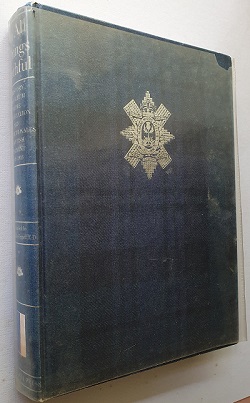Description
Title: In All Things Faithful – A History and Album of the 30th Battalion and New South Wales Scottish Regiment 1885 to 1985.
Author: Wade-Ferrell, F
Condition: Very Good
Edition: 1st Edition
Publication Date: 1985
ISBN: 0869170120
Cover: Hard Cover without Dust Jacket (protected by a plastic cover) – 396 pages.
Comments: The history of the 30th Battalion (New South Wales Scottish) Regiment – Limited Edition of 750. This is No. 590. Has the usual ex library stamps confined to the half title page.
Sydney’s 30th Infantry Battalion was the “New South Wales Scottish Regiment”, raised in 1935. A Scottish regiment had belonged to New South Wales since 1885, the first being the “New South Wales Scottish Rifles”. The 30th wore the tartan of the British Army 42nd (Black Watch) Royal Highland Regiment.
Like many Militia units during the start of the Second World War, the 30th volunteered for overseas service as a whole unit but was rejected. Individuals could volunteer for the AIF but not whole units. The 30th continued soldiering part-time, however once Japan entered the war the battalion was mobilised for full-time service.
In March 1942 the battalion moved into a defensive position in North Sydney, deployed between Manly, Freshwater Bay, and Curl Curl. When Sydney Harbour came under Japanese submarine attack on the night of 31 May, the battalion “stood to” but there was little it could do, especially as many members were on unofficial leave. The 30th moved to Greta for further training the next day, joining the 4th and 35th Battalions as part of the 8th Brigade.
At the start of July the 30th moved to Western Australia, where it spent two years training, labouring, and manning defensive positions along the coast from Bunbury to Geraldton. It was part of the 2nd Division, making up III Corps with the 1st Armoured Division.
At the end of 1943 the brigade moved to Queensland, via Sydney. The 30th moved into camp at Tolga, North Queensland. In January 1944 the brigade, now part of the 5th Division, moved to New Guinea. Its role was to support the 9th Division’s Huon Peninsula campaign by clearing the Rio Coast between Sio and Saidor.
The 30th took over from the 4th at Crossingtown and both battalions reached Saidor by the second week of February. They were supported by the 35th patrolling the many mountain tracks and villages further inland.
The 8th Brigade’s next objective was Madang. Staying on the coast and moving on foot and by barge, the 30th occupied Madang and then Alexishafen by the end of the April. The brigade was based in the Madang area for the rest of the war.
In May the brigade was ordered to maintain pressure on the Japanese situated north of Alexishafen. The 30th was stationed at Alexishafen from where it sent out long-range patrols to Hansa Bay, and the Ramu and Sepik Rivers.
After the 6th Division captured Wewak, the 30th was transported to the area in June to help defend the newly established Australian base. The battalion was responsible for the area between Mt Tazaki and Mt Shiburangu. Clashes with the enemy were common, especially during July when the Japanese unsuccessfully attacked Mt Tazaki.
Following the end of the war, the 30th paraded at the Japanese surrender ceremony at Wewak in September. In October the remaining 8th Brigade was brought to Wewak. Over time the ranks of the 30th thinned as men were discharged or transferred. By the end of the year most of the brigade had returned to Australia. The last group of men from the 8th Brigade left New Guinea on 24 January 1946 on board the transport ship Ormiston. The 30th Battalion disbanded at Chermside in Queensland in March.
Includes Nominal Roll




